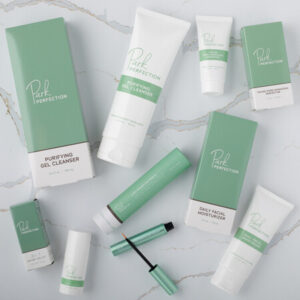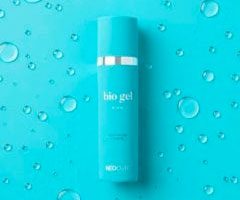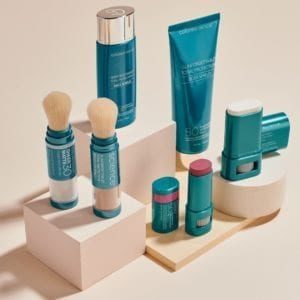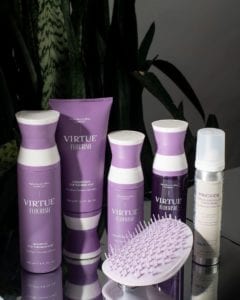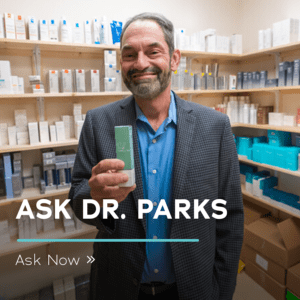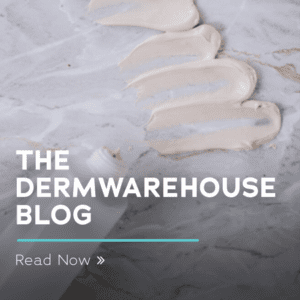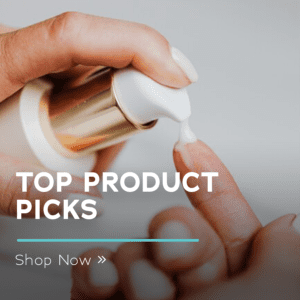SKIN CARE ROUTINE:
A good rule of thumb is to apply your products from the lightest consistency to the heaviest. For example, when it comes to your morning routine, we would recommend the following order: Cleanser, Toner, Eye Cream, Treatment Product (for example, a serum), Moisturizer, Sunscreen. In the evening, your routine will be fairly similar except you’ll use your spot treatment before your moisturizer and you likely won’t be using sunscreen. For more information, check out our blog on What Order to Apply Skincare!
It’s never too early or too late to start using skincare products. Your skin will have different needs at different ages, so it’s important to choose products based on your concerns at the time. In your 20s, preventative care is most important, as it’s unlikely you’re showing many signs of aging. As you age, anti-aging products will help keep your skin healthy and beautiful. Check out our blogs for skincare routines through the decades to find some great sample routines.
Sunscreen! You should be using sunscreen every single day, even if it’s cold or cloudy. 90% of skin aging comes from the sun, so you could be spending thousands of dollars on skin care every year, but if you’re not protecting your skin from the sun, then you’ll still experience the negative effects. Not to mention, using sunscreen daily will also help protect against skin cancer.
When it comes to spending on skin care, we totally get that the sky’s not the limit. If you’re wanting to save on some of your steps, we recommend splurging on your treatment product (your serums, spot treatments, and the products that actually address your main concerns). If you’re looking to save, it makes sense to do so on products like a cleanser, moisturizer, and sunscreen that don’t need as many of the active ingredients the treatment products do in order to perform their main functions.
Yes. The skin around your eyes is thinner and more delicate than the skin on the rest of your face, which means it can also be more sensitive. Be careful putting your regular face products right around your eyes. Also, eye products are specifically formulated for specific eye concerns (dark circles, crow’s feet, puffiness), so you’ll want to use a product that has ingredients to target those specific issues.
RESULTS:
Typically, you’ll start seeing results after a few months but it depends on what the product is, what it’s for, what ingredients it contains, and the condition of your skin. For hyperpigmentation/dark spots, for example, these products can take months before you start seeing results. You’re trying to make improvements on sun damage that’s been building up over a lifetime, so this can take a while. Another example, if you’re someone who has never used a professional-strength skin care product and all of a sudden you start using even one thing, chances are you’ll see results pretty quickly after going from 0-100. If you’re 28 years old and don’t have any concerns, you may not really see any results right now, but the products will be protecting your skin as it ages. The most important thing to remember is to be consistent with each product or ingredient you’re using. If you often start and stop new products, you may not see the results you desire.
For hyperpigmentation/dark spots, these products can take months before you start seeing results. You’re trying to make improvements on sun damage that’s been building up over a lifetime, so this can take a while. We always try to manage expectations when it comes to products for hyperpigmentation and dark spots. We understand you want to see results right away with any product you’re using, but clearing up dark spots is tricky and patience is needed. Make sure you’re also using sunscreen daily to prevent new sun damage.
WHAT’S THE DIFFERENCE:
With a physical sunscreen (also called mineral sunscreen), minerals in the formula sit on top of the skin and reflect the sun’s rays. This type of sunscreen can be used by all skin types, but is especially useful for those with sensitive or post-procedure skin. It utilizes zinc oxide or titanium dioxide as its main ingredients. A chemical sunscreen protects your skin by absorbing the sun’s rays and turning them into heat that doesn’t harm your skin. This is the typical sunscreen that you’ll see used, as it’s lightweight and usually not noticeable on the skin. Chemical sunscreen can generally be used on all skin types as well and is recommended for those who are more active and may need to reapply more often.
Retinoic acid is a prescription-only treatment (tretinoin is the generic name for this). Tretinoin Cream comes in strengths 0.025%, 0.05% and 0.1% and Tretinoin Gel comes in a 0.05% strength. Retinol is a cosmetic treatment that can be purchased over the counter. This comes in strengths 0.25, 0.5, and 1.0. 0.025 for Tretinoin and 0.25 for Retinol are the lowest end of the spectrum.
You can read more about the difference between retinoids, retinol and tretinoin HERE.
NewGel+ and Biocorneum are both excellent scar treatments. NewGel+ comes in a gel formula and they also have scar treatment sheets, so if you have a larger scar on the body, this may be the best choice. Biocorneum only has a gel formula, however, their formula also contains SPF, which will protect the scar from the sun.
Read more about the difference between these two scar treatment brands HERE.
The original Lumière formula includes hyaluronic acid, caffeine, and growth factors, which work to reduce the appearance of fine lines and wrinkles in the fragile eye area. This eye cream visibly diminishes the appearance of under-eye darkness while soothing and refreshing the delicate area to banish signs of fatigue. The Firm product line (including Firm Riche) includes all of those ingredients plus peptides for the ultimate anti-aging treatment. In addition to the original Lumière product, the Firm formulation utilizes similar ingredients to the Neocutis Micro Eyes tightening eye cream, including the proprietary peptides.
Both Lumiere Firm formulas are meant to address any and all skincare concerns for your eyes. The Firm formula is actually a mixture of both the original Lumière and MicroEyes formula.
Read more about the difference between these products HERE.
The SkinMedica TNS Advanced+ Serum is the new, more advanced formula of the TNS Essential Serum. The products both have two chambers, but the formulas are very different. Most notably, the TNS Advanced+ has a significantly higher number of growth factors, contains peptides, and no longer contains vitamin C, making it better for more sensitive skin. The SkinMedica TNS Advanced+ is clinically proven to reveal results in half the time as the TNS Essential Serum as well.
Read more about the difference between these two products HERE.
Both formulas contain peptides and antioxidants. However, Nectifirm Advanced uses eight different peptides, compared to five in the original formula. These distinctive peptides work to improve the appearance of fine lines and wrinkles on the skin, while antioxidant technology helps the skin to improve its natural antioxidant system and prevent future signs of aging on the neck.
Read more about the difference between these two products HERE.
The rich or riche version of any product will be richer, more hydrating, and better for very dry skin.
A physical exfoliant is either a product or an actual tool that requires physical abrasion to loosen dead skin cells from the top layer of your skin. They might be scrubs, loofahs, facial cleansing tools or anything in between. chemical exfoliation means using products with ingredients that react with the skin to increase the rate of cell overturn and get rid of dead skin cells from the inside out, rather than physically scrubbing them away.
Read more about chemical vs. physical exfoliants HERE.
Here’s a great analogy: If you’re in the desert and haven’t had any water, a hydrator would be like drinking a glass of water (hydrating from the inside – the hydrator will hydrate the lower layers of the skin but you won’t necessarily feel as moisturized on the surface layer) and a moisturizer would be like splashing a glass of water on your face (moisturizes the top layer of the skin, but does not go deeper than the surface).
Read more about moisturizers vs. hydrators HERE.
BEST INGREDIENTS:
For brightening the skin, look for products containing Vitamin C, Niacinamide, Arbutin, or Lactic Acid.
Read more about these ingredients HERE.
For acne prone skin, look for products containing Benzoyl Peroxide, Salicylic Acid, Retinol, Glycolic Acid, Lactic Acid, or Sulfur.
Read more about these ingredients HERE.
For hyperpigmentation, look for products containing Hydroquinone (no longer available over the counter), Arbutin, Kojic Acid, Phytic Acid, Bearberry Extract, or Niacinamide.
Read more about these ingredients HERE.

